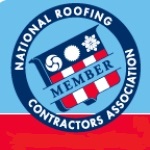Long Island Roofing: Article About Ice Dams
This term refers to a leak barrier product that prevents snow and melting ice from seeping into the interior of a home. An ice shield provides a watertight shield that lies between the shingles and the roof deck. It can be applied to an entire roof, or limited to certain problem areas.
Question answered by an experienced Long Island NY roofing contractor: Should I remove ice dams myself?Removing ice dams is a hazardous task. Climbing up on your roof always carries a degree of risk, but it's especially dangerous when the roof is coated with ice and snow in the winter. While there are many preventative measures homeowners can take to avoid future ice dams, it's best to call a professional roofing contractor to handle the removal.

If you've been noticing icicles suspended from your roof, you may have a problem with ice dams. Left untreated, ice dams can eventually cause damage to your home. It's important to call a Long Island roofing company to remove ice dams when they first form, before the next thaw causes a leak in your roof.
An ice dam is a ridge created by a buildup of ice at the edge of your roof and is caused by inconsistent temperatures across the surface of the roof. When snow melts, ice dams prevent it from flowing off the roof. This accumulated water eventually infiltrates the area underneath the shingles, and can get into your house. Water damage from a leaky roof can cost thousands of dollars in repairs and impact the structural integrity of your home. Ice dams can also damage and even pull off your gutters.
The cycle of freezing and thawing can lead to ice dams on virtually any roof, but certain factors do make them more likely to form. If your roof is plagued by ice dams while neighboring homes are not, poor ventilation in your attic might be the culprit. In this case, excessive hot air in the attic causes snow to melt on the roof, even if it's not cold enough outside to trigger a thaw.
A roofing professional from Long Island NY can answer any question you have about architectural roofing or GAF roofing materials.
Ensuring that your attic is well-ventilated and insulated can make a big difference in minimizing ice dams. Clogged gutters are another common cause of ice dams. When water gets backed up in the gutters and freezes, it can push up on the underside of the roof and even get under the shingles. This can compromise the integrity of the wood and cause additional leaks.
Cleaning snow off the roof before it has a chance to freeze is another good way to prevent ice dams. You don't need to climb up on a slippery roof during the winter to perform this task. Specially-designed rakes allow you to take care of the snow from the safety of the ground. If the snow is too heavy to rake off your roof, call a reputable roofing company to handle the job. Professional roofing contractors have the safety equipment and expertise needed to clean off your roof.
An additional way to head off ice dams is to install an ice shield on your roof. This product is commonly applied when a new roof is being installed; if you choose to add it to your existing roof, it will be a much more costly project. Heating your gutters can also minimize ice buildup, but it's not a do-it-yourself task: You'll need to have an electrician handle the wiring for this heating system. While heated gutters can be costly, their ability to prevent potentially costly repairs makes the investment worthwhile.









